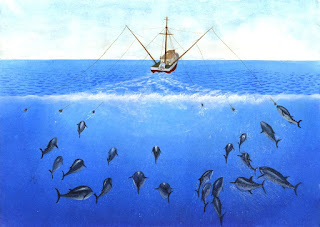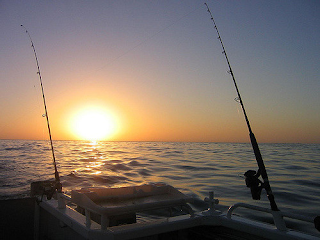Best fish trolling techniques
Best fish trolling techniques
Hensley, of French Look fame, probably has as much time fishing the rough conditions of Cape
Verde, Ghana, and Madeira as any captain alive.
Today he runs Chupacabra, a 64-foot Hatteras based in Los Cabos, Mexico. “The best way to troll is to fish in the trough,” he says, “which requires makingconstant adjustments. I like to troll aggressive, slant-headed lures for big marlin. That’s easy in calm water, but more difficult in big seas. The lures want to fly out of the water, so keeping them down and swimming becomes a major concern. I can switch to flat or cupped heads, but if I work hard to keep my approach angle correct for the sea direction and height, I can make the slant heads work properly.
This works even in Cape Verde, where the seas can look like the moguls on a ski slope.” Roberts, another big-marlin skipper who prefers lures over baits, chimes in. “The object is to keep the lures in the water, whatever it takes,” he says. He spent most of the 1990s with French Look in Cape Verde — which he
says is “consistently the windiest, roughest place I’ve ever fished” and many more seasons in Madeira, where he caught 37 monsters blue marlin in a single 45-day period in 1994, with 11of those
fish going over the 1,000-pound mark. Add in Ghana and the Canary Islands, and he has lots of experience in rough water.
“I try and stay in the trough or quartering big seas,” Roberts continues, “but it’s extremely difficult to maintain boat speed going up- or down-sea. No matter what, speed is critical. You have to be on your game to keep the lures working correctly for them to produce bites. When the wind is a problem, I will raise the halyard position on the leeward side and lower it on the windward while quartering. That will keep the lures spread out and working. I run more weight on the teasers to keep them from falling off waves, pull my favorite slant heads shorter and from
a lower rigger position, and even switch to flat or chugger styles if necessary.”
THE BAIT-WEIGHT DEBATE
Bell has run charter and private boats out of Stuart, Florida, since 1992 and is a tournament-winning captain. He has spent multiple seasons in the Dominican Republic and St. Thomas, plus 14 seasons in Isla Mujeres, where conditions are regularly rough. He runs the charter boat Unbelievable, a 61-foot Richie Howell.
“Fishing the trough in rough weather is nice, but sometimes it just can’t be done, and you have to be able to make the transition,” he says. “Making tacks up- or down-sea with quick turns to change direction 180 degrees has to be done carefully. The cockpit can be dangerous if your anglers aren’t nimble enough to maintain their footing, or forget to keep a grip on something, but I can do this comfortably enough and still get my spread to work. Speed should be monitored and adjusted constantly. We rig our ballyhoo with a little more chin weight and run them farther back to keep them in the water. And we use dredges with 12-inch squids and add extra weight to keep them
working. It’s nothing revolutionary, just attention to detail and a lot of extra caution.”




Comments
Post a Comment